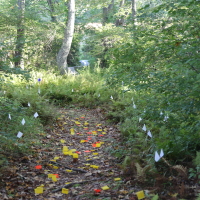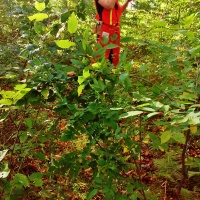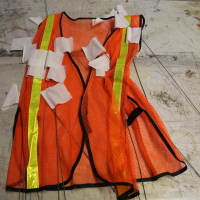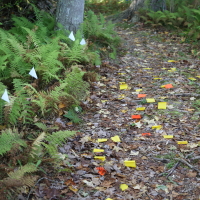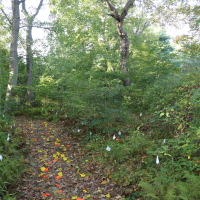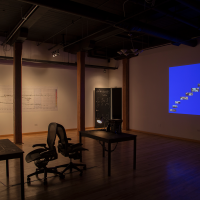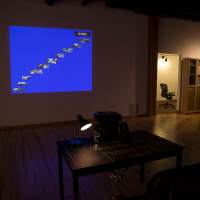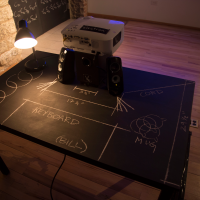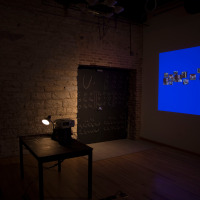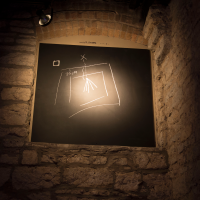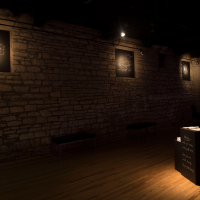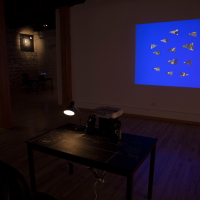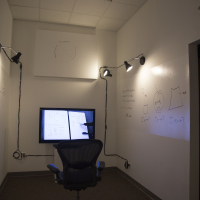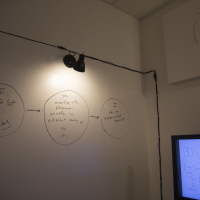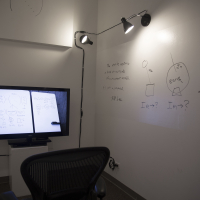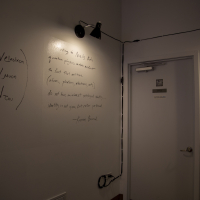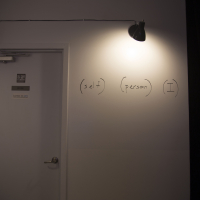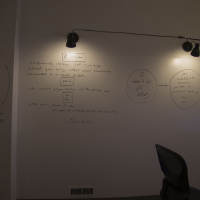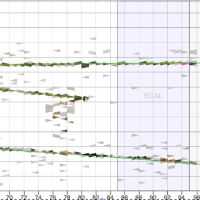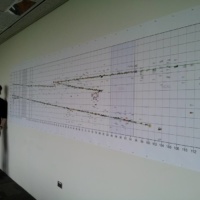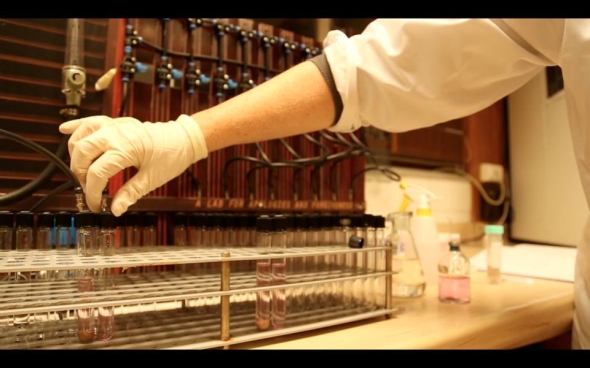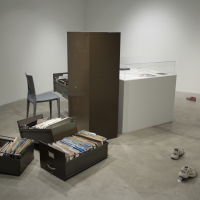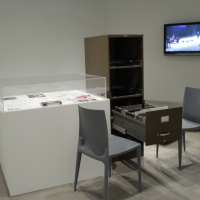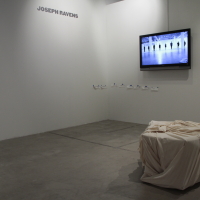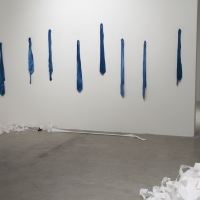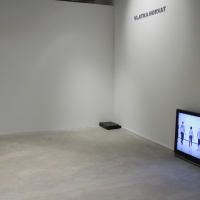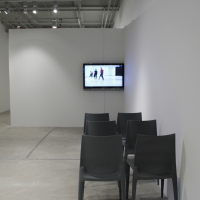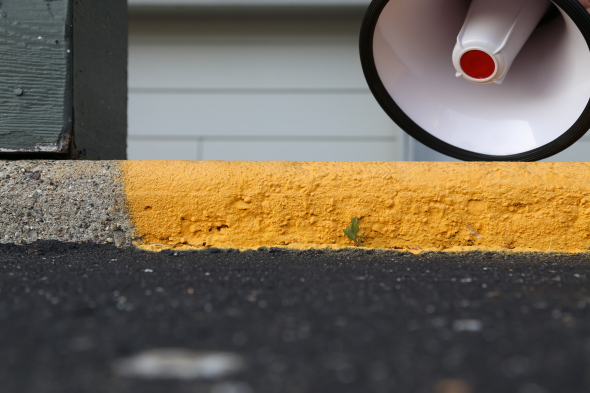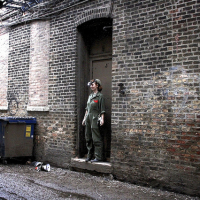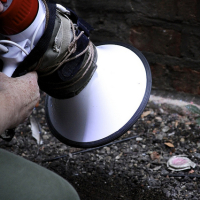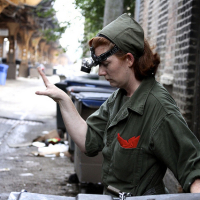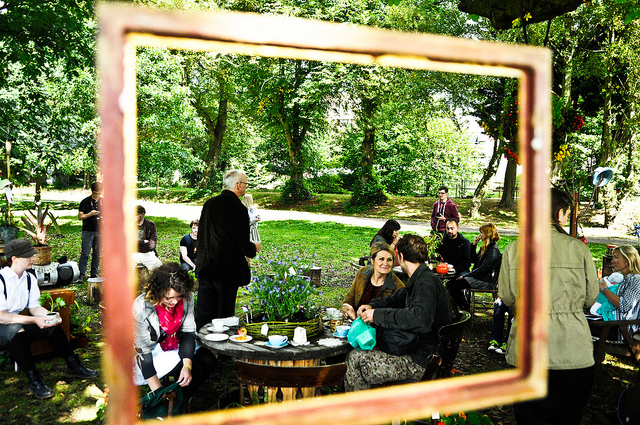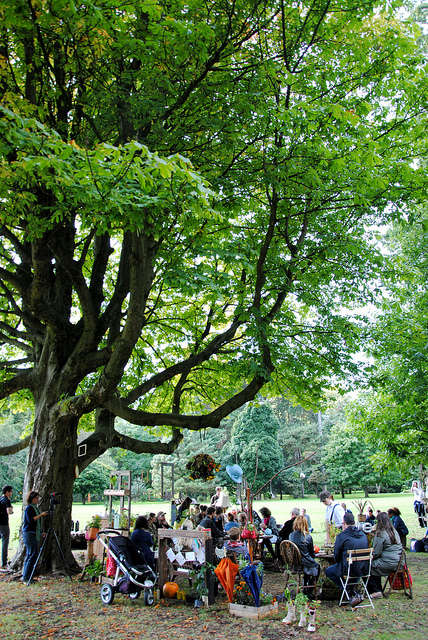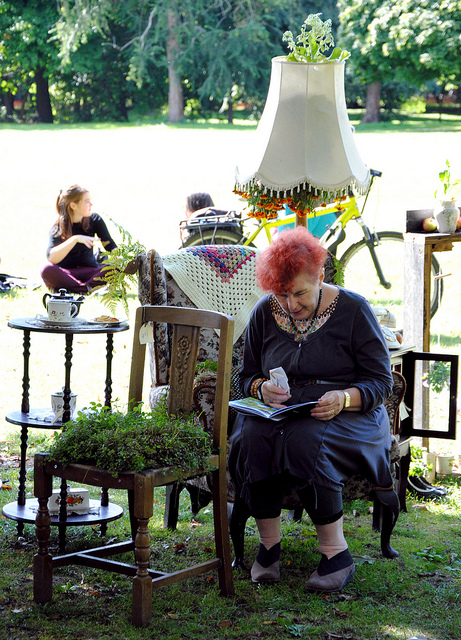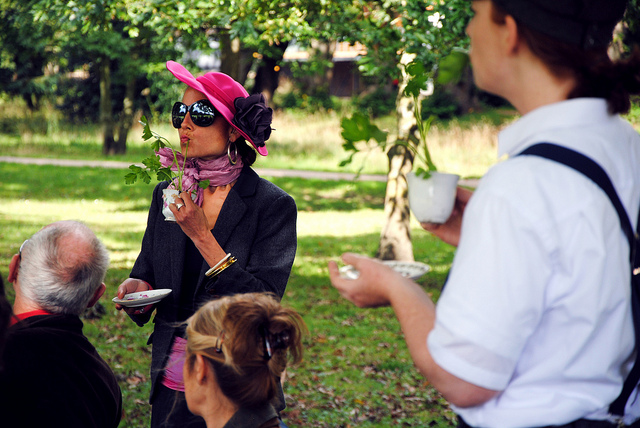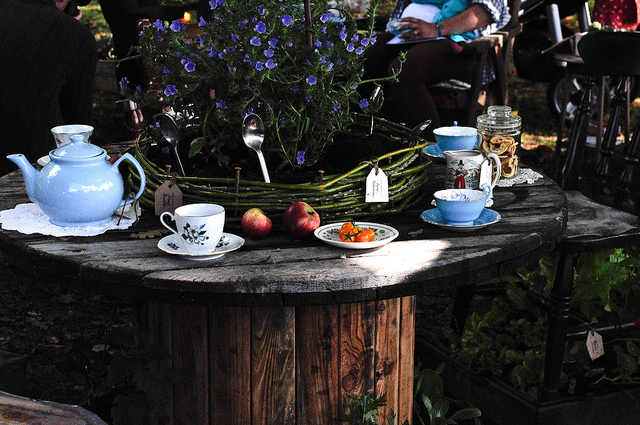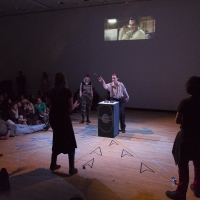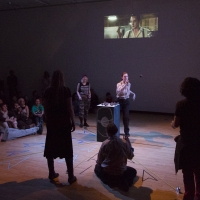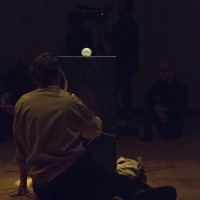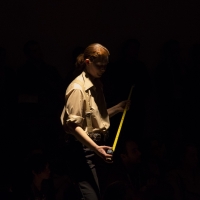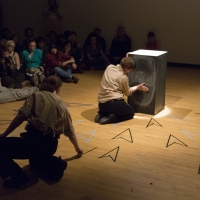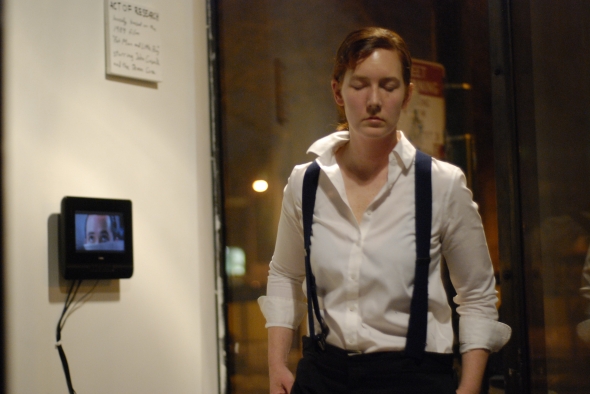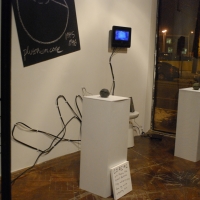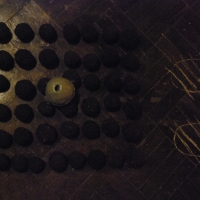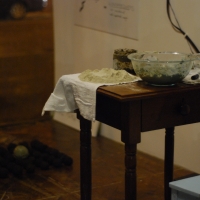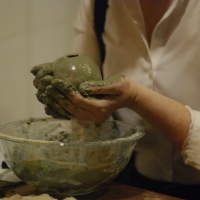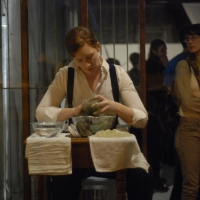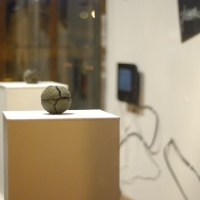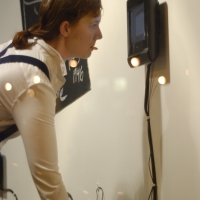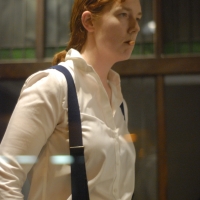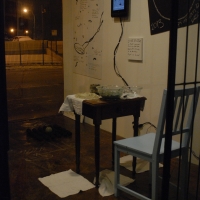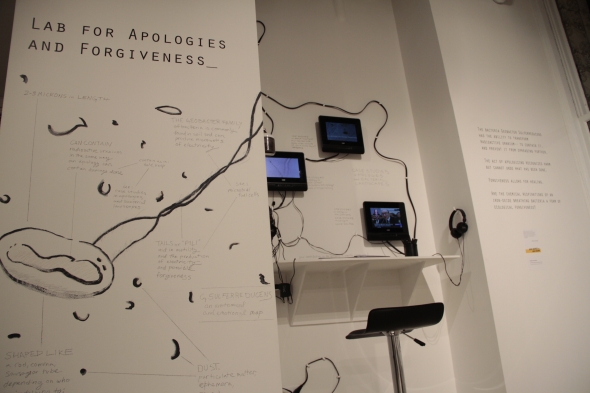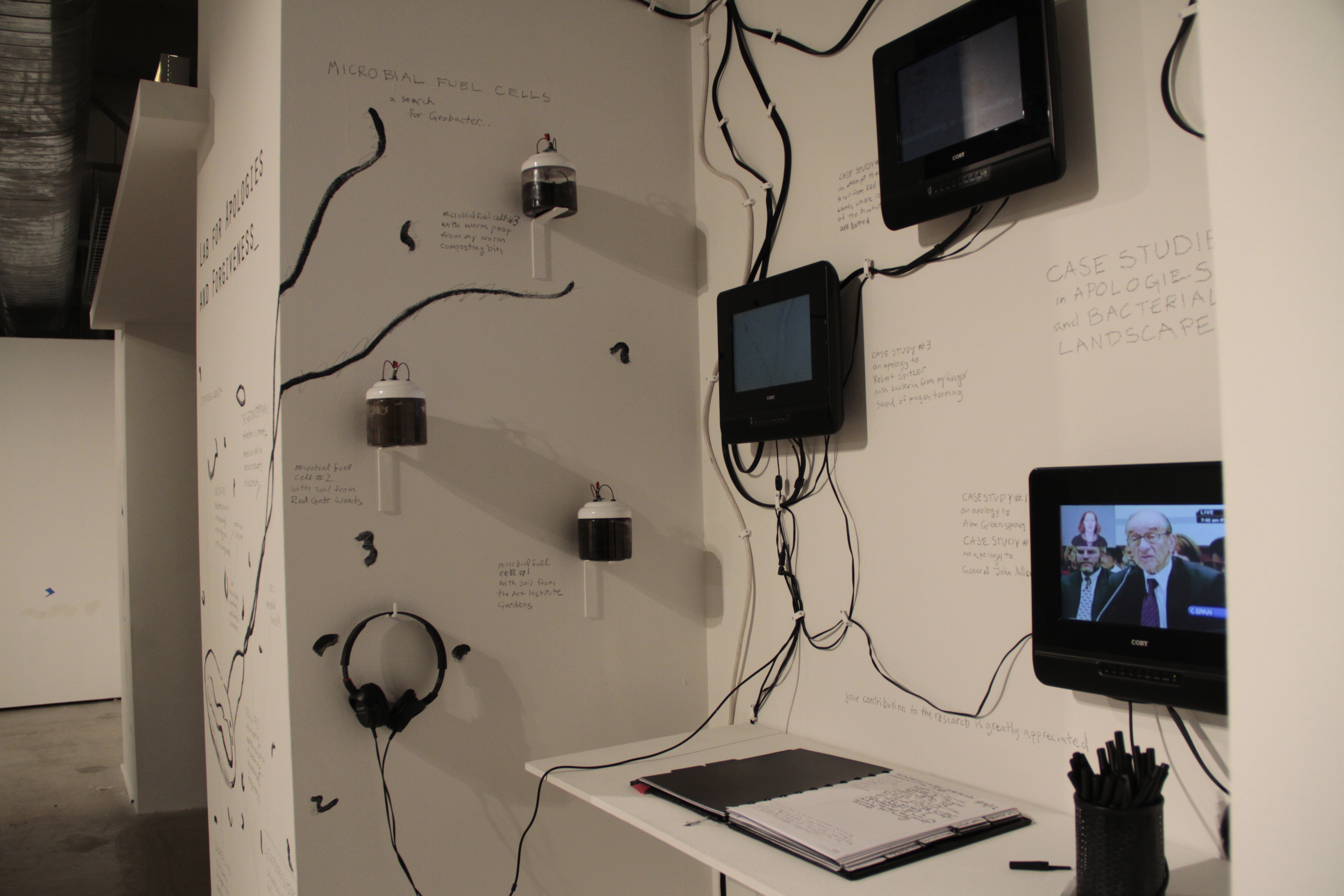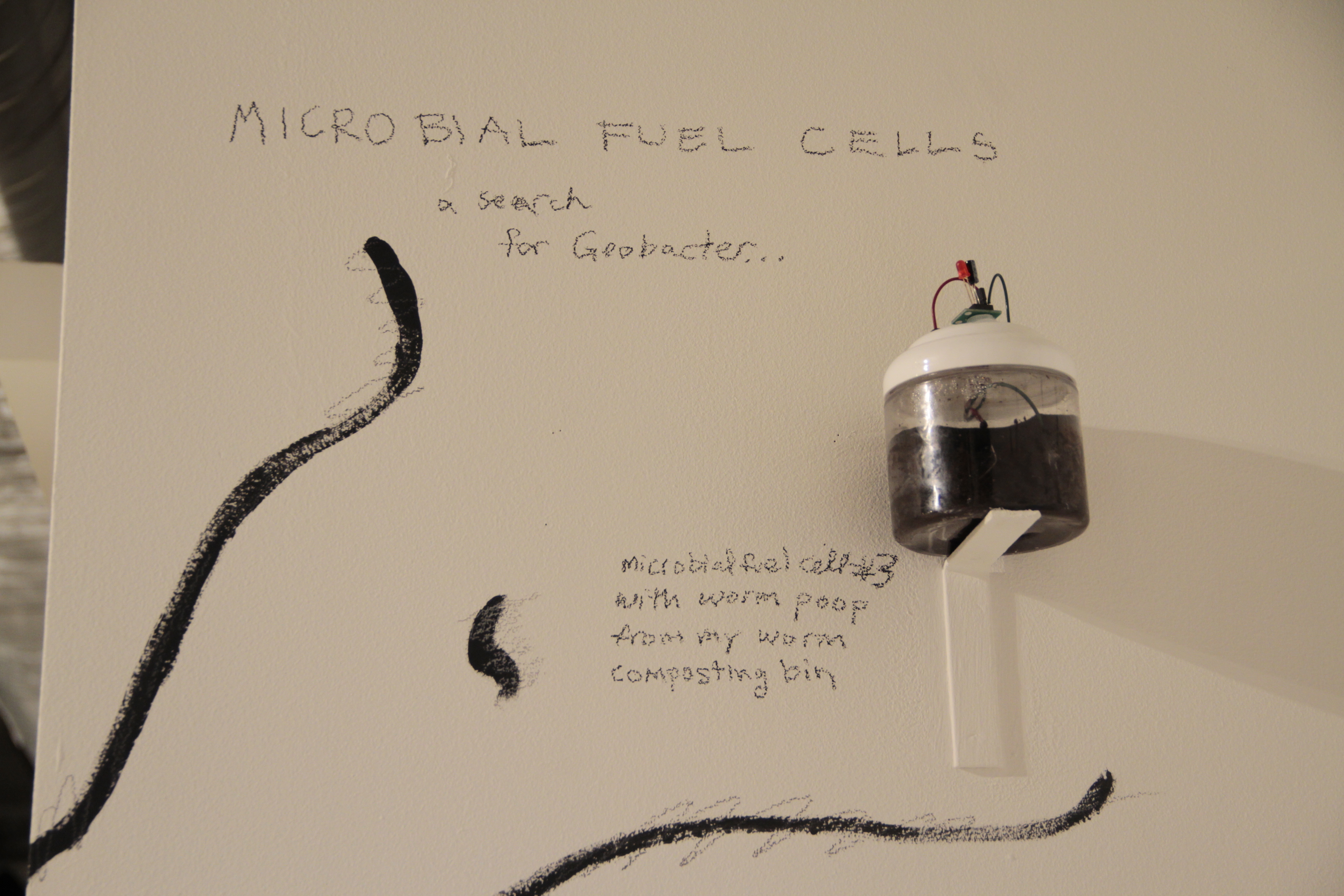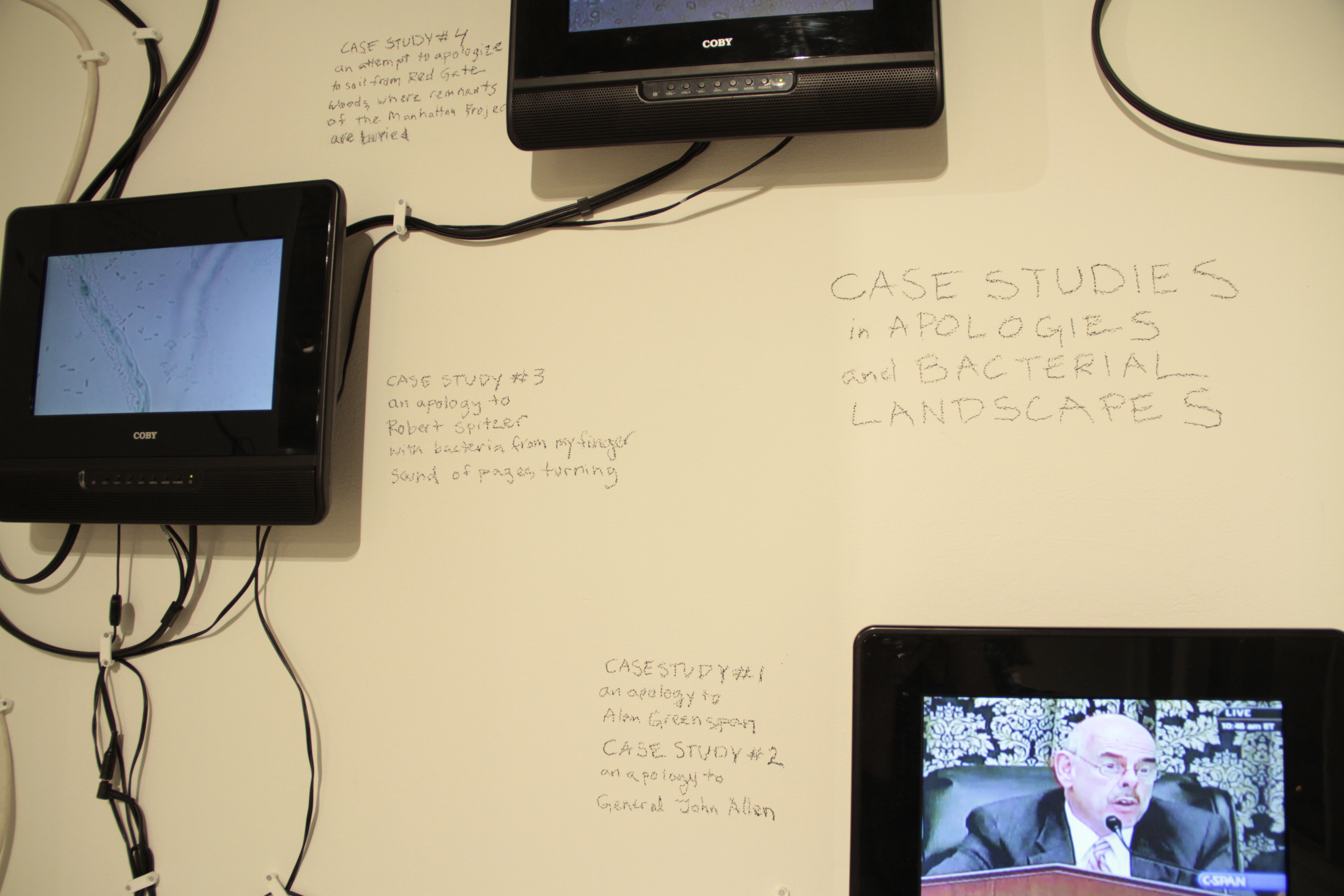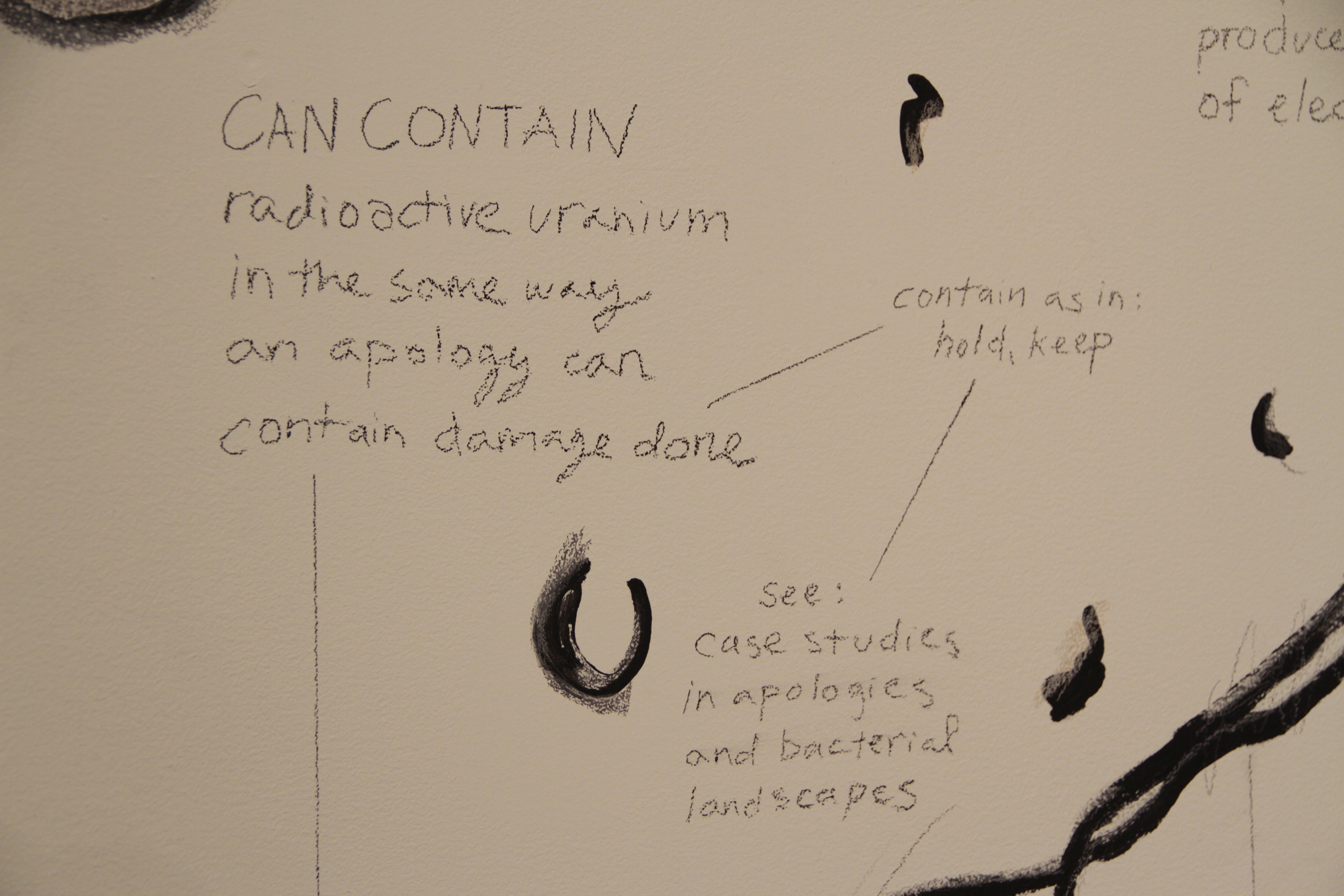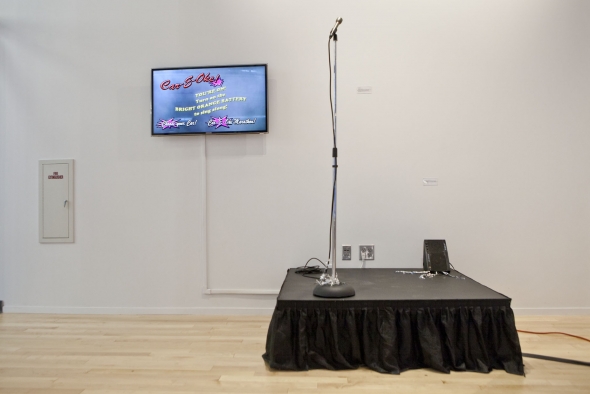performance
Systems of Pain/Networks of Resilience (New York) (2016)
Part of Systems of Pain/Networks of Resilience (sop-nor.tumblr.com/). Created at Residency 108.
Systems of Pain/Networks of Resilience (Nebraska) (2016)
Systems of Pain/Networks of Resilience is an exploration of observation as a tool for recovery from imbalance and trauma in human and non-human processes. In (Nebraska), I interview a naturalist, a political scientist, a physical trainer, a representative of the Nebraska Humane Society, a woodworker, a Hospital Chaplin, and a number of individuals and artists who are in recovery from physical or emotional trauma. The interviews create a performance score for a live performance and video, compelling a number of interactions with everyday objects, and a specially designed table by Jason Friedes. Photos by Colin Conces/Bemis Center for Contemporary Arts.
Discourse: Projector: Plant: Filter (2015)
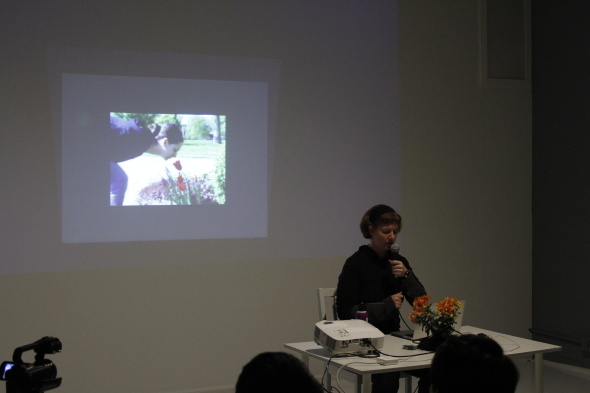 A live performance: an attempt to facilitate a conversation between a plant, projector, microphone and laptop through acts of respiration. Performed at the 2015 Performance Philosophy and Earth Matters on Stage Conferences, as well as Defibrillator Performance Art Gallery. Photos by Jeremy Sublewski.
A live performance: an attempt to facilitate a conversation between a plant, projector, microphone and laptop through acts of respiration. Performed at the 2015 Performance Philosophy and Earth Matters on Stage Conferences, as well as Defibrillator Performance Art Gallery. Photos by Jeremy Sublewski.
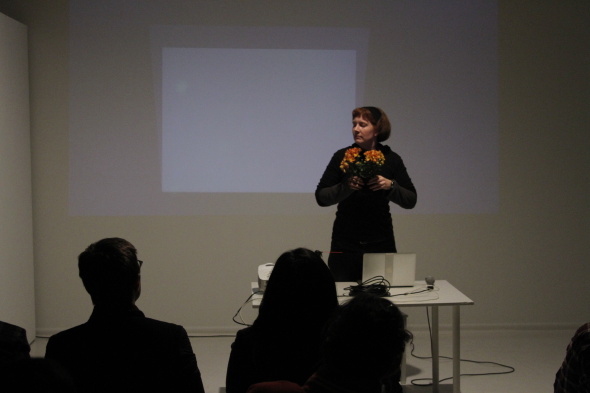
Tracks and Trails (2015)
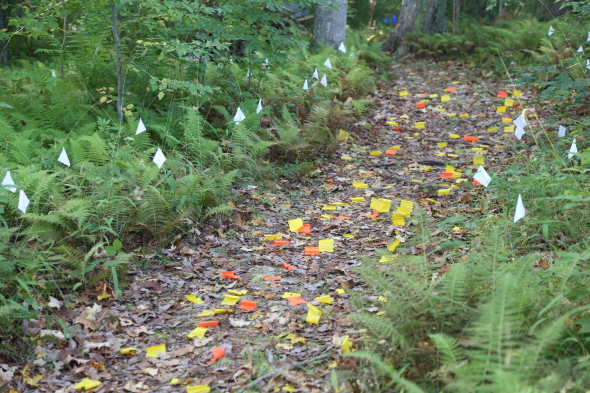
Based on my previous work of the same name, Tracks and Trails (2015) examined the meaning and implications of travel and transportation from the lens of a specific site. I again worked with a multimedia bullhorn, this one playing clips from interviews with East Haddam residents about their relationships with trails, their favorite plants, their local routes, their relationship to the site, and other subjects. A performance directed to plants for human audience passers-by. The performance was park of the I-Park Environmental Art Biennale — an installation with landscape flags remained up before and after the performance.
Wave Management (2015)
I interviewed Steve Littler, Operations Manager at Biosphere 2, about the function and maintenance of the Ocean Ecosystem’s Wave Machine, and made this video. You can hear the Wave Machine screaming in the background. Thanks to Benedict and French.
Discourse: Climate: Facts: Values (2015)
I spoke with people about the weather. It’s a lot more complicated now, and with different meaning, than it used to be.
Discourse: Climate: Facts: Values from Meghan Moe Beitiks on Vimeo.
Observations on Final States in Interactions (2015)
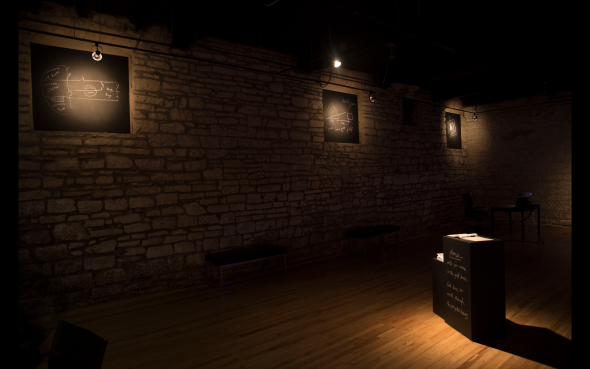 I interviewed four experimental physicists from Fermi National Accelerator Laboratory about their daily interactions with neutrinos, their own experiences of role and identity, and their perceptions of me as a person. The result is four different video installation “systems,†based on those interviews, the detectors, and the four possible identities of neutrinos. Grounding the work is a conversation with David Galin, an author and researcher of the concept of ‘self.’ Within “Observations of Final States in Interactions,†I explore parallels between neutrinos and human concepts of self, the performance of science and scientific research, and what it means for us all to be mutually entangled.
I interviewed four experimental physicists from Fermi National Accelerator Laboratory about their daily interactions with neutrinos, their own experiences of role and identity, and their perceptions of me as a person. The result is four different video installation “systems,†based on those interviews, the detectors, and the four possible identities of neutrinos. Grounding the work is a conversation with David Galin, an author and researcher of the concept of ‘self.’ Within “Observations of Final States in Interactions,†I explore parallels between neutrinos and human concepts of self, the performance of science and scientific research, and what it means for us all to be mutually entangled.
Neutrinos are one of most ubiquitous subatomic particles. Beaming through the empty space in atoms, they are very difficult to detect, defined primarily by the particle they happen to bump into. There are three, possible four, types of neutrinos: Muon, Electron, Tau, and the elusive Sterile, or non-interacting, neutrino.
At Fermilab in Batavia, Illinois, there are four large detectors built to examine neutrino oscillations and interactions: MINOS, MINERvA, NOvA, and MicroBooNE. Each detector looks at different aspects of neutrino interactions and identities: at the heart of the research lie some of the bigger questions for the universe. Why it is made up of matter, for instance. “Observations of Final States in Interactions†is exactly what its title suggests: a series of observations, a drawing of parallels between methods of inquiry, a look at systems of knowing and understanding. It seeks not to answer the profoundly large questions, but only to point out commonalities. Big thanks to Ross Stanton Jordan for curation, as well as Kate Zeller and Georgia Schwender for facilitation.
Observations on Final States in Interactions (Exhibition Photos) from Meghan Moe Beitiks on Vimeo.
Detector Systems (MINOS: Muon, MINERvA: (Tau), NOvA: Electron ) (2015) Video (8:30 mins), projectors, computer speakers, lamps, painted desks, chalk. Featuring interviews with Fermilab Physicists Bill Lee, Mateus Carneiro da silva, Sam Zeller, and Zarko Pavlovic.
MicroBooNE: (Sterile) System (2015): (Video 3:11 mins). Featuring footage of Fermilab Physicist Sam Zeller, and an interview with David Galin, author of “Self, Person and I†in Buddhism and Science: Breaking New Ground.
Dry Erase System (2015): adjacent to MicroBooNE, re-imaginings of Sam-Zellers drawings, infusing descriptions of neutrino research with concepts of “self,†quotes from Galin, Fermi Physicist Bill Lee, Karen Barad.
Chalkboard System (2015): Chalkboard drawings and calculations used in neutrino research. Materials: paint, chalk.
Intra-active Hitmap (2014): Paper, 37†tall, 13.3’ long. Large-scale reimagining of an actual neutrino interaction hitmap from Fermilab. A reflection on the work of the artist and the physicists and the resulting “tracks†of that work.
PRESS:
“It doesn’t take long for visitors to also feel like they are part of the exhibit: neutrinos constantly oscillating and changing.”– Downtown Auroran
“It is easy to become overwhelmed by the layers of Beitiks’ work. However, if approached with the understanding of one or two clear elements, the depth of the exhibit surfaces. Each aspect feeds into the next and the details become clear in how they interact with one another. A significant aspect in this exhibit is the way in which interaction unfolds. It reflects both her process of exploring neutrinos, the physicists who interact with them, and Beitiks’ own interactions with the physicists in their work environment. Through the audio clips and the multiple ways in which the clips stem into other ideas (that then interact with each other) she is exploring the process of how art and science can work together and separately.” — Jorie Senese, Water Street Studios Blog
UPDATE:
The Intra-Active Hitmap (2014) was displayed at Fermi National Accelerator Laboratory for several months following this exhibition (2015/2016).
MicroBooNE System from Meghan Moe Beitiks on Vimeo.
Detector Systems from Meghan Moe Beitiks on Vimeo.
GM Canola Trial Run (2014)
While I was in Western Australia in the summer (winter) of 2014, the verdict for a prominent case was announced. An organic farmer’s canola crop had been contaminated by his neighbor’s genetically modified canola. He sued this neighbor, and the court came down against him. I interviewed a canola farmer who was growing conventional and genetically modified canola side by side, and a farmer who is decidedly against genetic modification. An exploration of communication and relationships in the context of environmental management. No GM canola pollen or seed was intentionally spread in the making of this film: I run through non-GM fields. Thanks to Perdita Phillips.
((Pollen)) (2015)
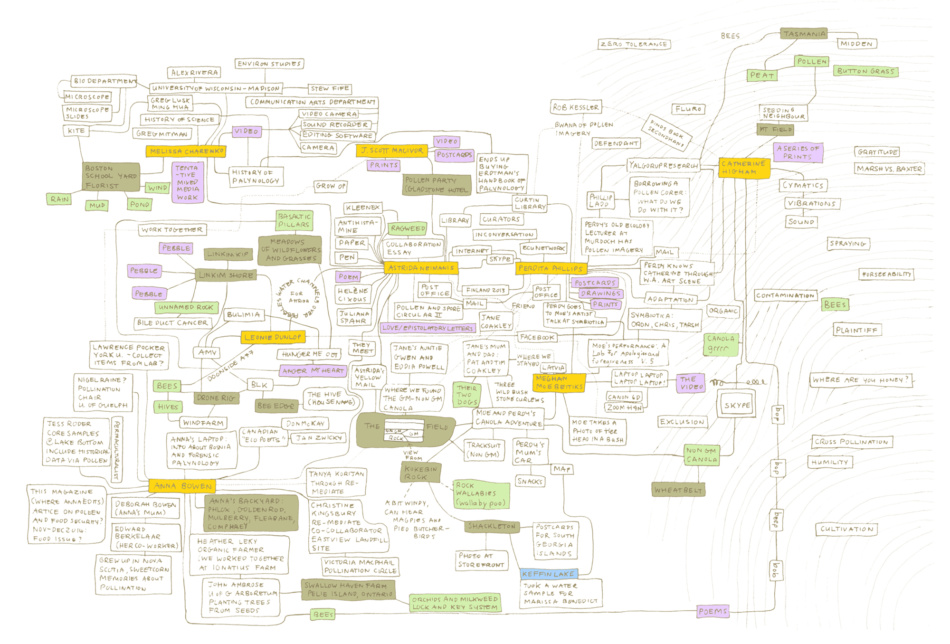
((Pollen)) is a project that began in response to the InConversation exhibition that was shown at Spectrum project space, Western Australia October 9 to 24 2014. A diverse group of makers and thinkers have been investigating pollen — in particular how pollen can be interpreted in different ways in different disciplines and by utilising different perspectives.
The aim of the InConversation exhibition overall was to bring together teams of three or more collaborators. Collaborators had to be from a different discipline or profession, in an attempt to work through the difficulties of transdisciplinarity.
The ((Pollen)) project began with a mail art exchange. So far the project has generated letters (c.f. “love letters†to nonhuman worlds) and other material exchanges, as well as a short video/performance about Canola in Western Australia. Most of what we created as part of the collaboration couldn’t be included in the InConversation exhibition and plans are underway to bring the works together as a whole in 2015.
The ((Pollen)) project ‘body’ consists of
Perdita Phillips contemporary artist
Astrida Neimanis writer/cultural theorist
Meghan Moe Beitiks performance artist
J. Scott MacIvor urban ecologist
Catherine Higham artist and farmer
Anna Bowen poet and writer
Melissa Charenko history of science scholar
Leonie Dunlop placename researcher and poet
Why Pollen?
Pollen has been used extensively in palaeoclimate research. Under the microscope pollen particles are beautiful, but for many people spring is a time of great discomfort. At the same time the antihistamines used to treat hayfever are a significant element of pharmaceutical pollution of waterways. As pollen desiccates it folds inwards in spectacular ways (this allows the pollen to last longer and travel further) and this process is reversed once it is rehydrated. Combining our interests in nonhuman worlds we aim to create a meta-work about pollen.
Exhibition
((pollen)) collaborative diagram
Catalogue response by ((pollen)) team
A Lab for Apologies and Forgiveness v.5 (2014)
In Version 5 of the Lab for Apologies and Forgiveness, I built a gassing station for a uranium-reducing bacteria in the SymbioticA Centre for Excellence in Bio Art at the University of Western Australia, and crafted a performance for it using documentation of– and soil from– a Montebello Islands nuclear test site. I interviewed scientists from LaTrobe University working with the bacteria and asked them to re-perform moments from a movie referencing cold fusion. Within the scope of the work, I seek to draw connections between history, site, emotion, popular culture, and scientific research. UPDATE: one of the test tubes gassed during this performance, containing soil from Montebello Islands, led to the study of a new bacterial community at LaTrobe University. The new strain is called “LuMoe,” for Lucie Semenec and Moe Beitiks. Jennifer Woods at the Franks Lab at LaTrobe University is shepherding its research.
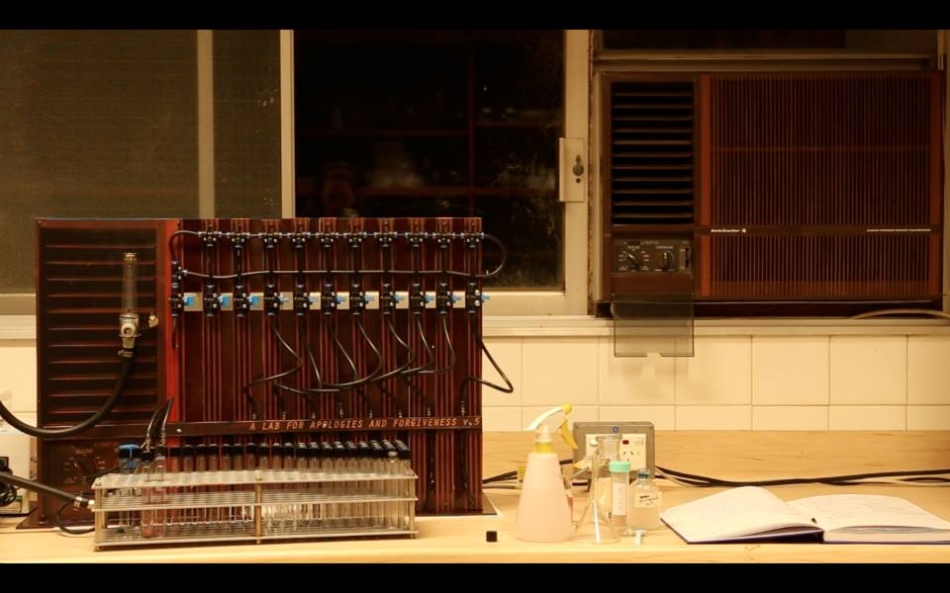
“A Lab for Apologies and Forgiveness v.5,” a gassing station built for the cultivation of Geobacter Sulfurreducens, modeled after the lab’s air conditioning unit 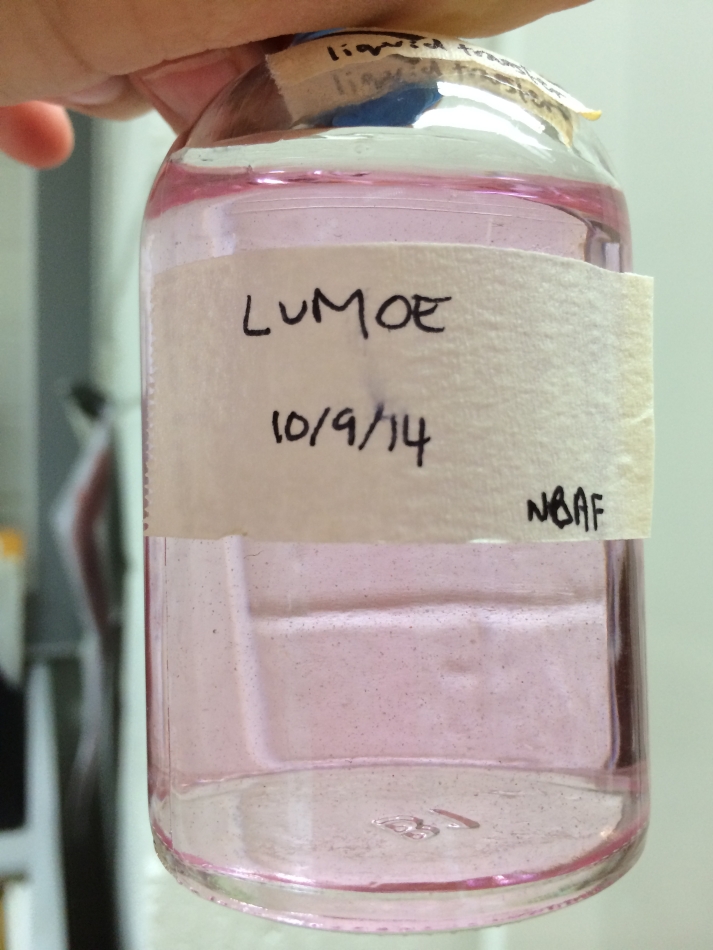
LuMoe, a unique bacterial community cultivated from the Montebello Islands as part of “A Lab for Apologies and Forgiveness v.5”
Embracing the Void (2014)
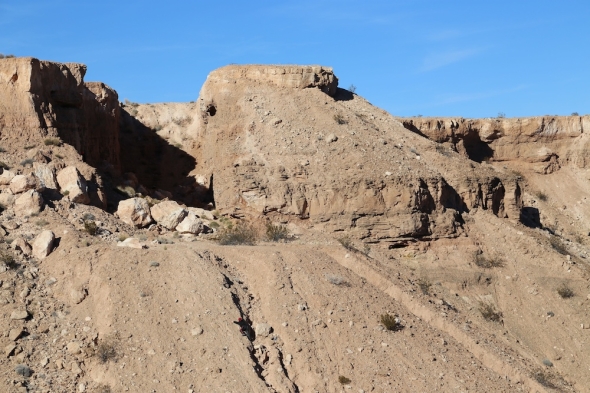 I hug the void within Double Negative (Michael Heizer 1969-70). Photo by Lindsey French.
I hug the void within Double Negative (Michael Heizer 1969-70). Photo by Lindsey French.
Lab for Apologies and Forgiveness v.4 (2014)
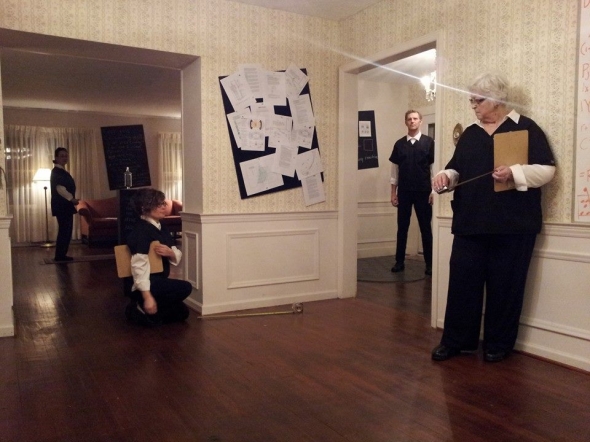 I conducted a workshop version of Lab for Apologies and Forgiveness, culminating in a live performance, with the parishioners and community of the All Saints Episcopalian Church in Saugatuck, Michigan. The workshop was two weeks, and explored the grounds of the church retreat house as a site for Apologies and Forgiveness. Marissa Lee Benedict, Dulcee Bohem and Sarah Knutdson were also kind enough to come out and engage in discussion salons of their work as pertains to the environment.
I conducted a workshop version of Lab for Apologies and Forgiveness, culminating in a live performance, with the parishioners and community of the All Saints Episcopalian Church in Saugatuck, Michigan. The workshop was two weeks, and explored the grounds of the church retreat house as a site for Apologies and Forgiveness. Marissa Lee Benedict, Dulcee Bohem and Sarah Knutdson were also kind enough to come out and engage in discussion salons of their work as pertains to the environment.
Here’s a radio interview I gave with Father Cory Stoppel on Holland, Michigan’s “Talk of the Town” about the process.
Thanks to Cheryl, Kathy, Rocky, Persis and Caitlin. Video footage by Lucia Earle.
A Lab For Apologies and Forgiveness v. 4: All Saints’ Episcopal Church from Meghan Moe Beitiks on Vimeo.
Trailer: (2013)
I asked staff and fellows at Ox-Bow during the summer of 2013 to describe to me their favorite scenes in movies. Then I used those descriptions to prompt performances with the landscape, and spliced those moments into their own trailer. The expanded short film has been in exhibition at Womanmade Gallery in Chicago.
Trailer: in process from Meghan Moe Beitiks on Vimeo.
Frozen In>Tensities (2013)
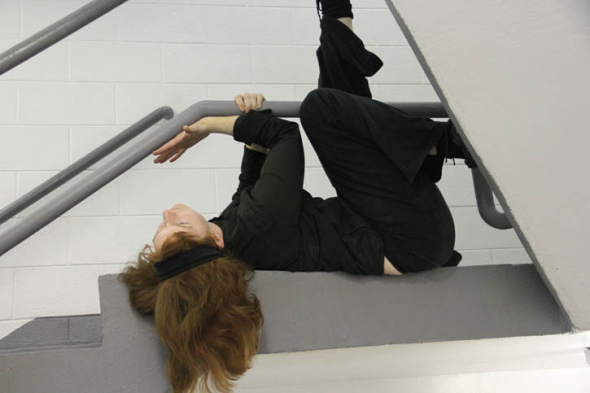
Frozen In>Tensities was a workshop with performance artists Vladkta Horvat, Joseph Ravens, and Kira O’Reilly, an exploration of performance methodologies. The participants in the workshop creates pieces in response to site, props and the Performance Department archives. The resultingexhibition at the Sullivan Galleries displayed artifacts and documentation of our work. Our public performances were programmed as part of the In>Time Performance Festival.Â
Tracks and Trails (2013)
I created a piece called “Tracks & Trails” for the Out of Site Festival in Chicago. It’s a public address to volunteer/weed plants, interwoven with historic speeches and the ambient sounds of the overhead train. I used photographs from the Chicago History Museum and descriptions of Illinois weeds as performance prompts. Final performance was October 4th, 2013, 5-7pm, under the Damen Blue Line “L” tracks.Â
Trans-Plantable Living Room (2013)
In September 2013 I was in the UK working on The Trans-Plantable Living Room with Tanja Beer, Rosie Leach, Lisa Woynarski and Bronwyn Preece.
Rosie interviewed gardeners in Cardiff, Tanja designed a grown living space, and Lisa, Bronwyn and I developed a performance in response to both. It premiered in Cardiff at the World Stage Design Conference followed by an adaptation at the Central School for Speech and Drama’s Collisions Conference. We explored what it means to garden in a global and local sense.
The project evolved over a series of months, with Bronwyn, Lisa and I first creating a video in response to Rosie’s interviews. The gardeners interviewed were deeply involved in the build and implementation of the piece in Cardiff.
UPDATE: This work was featured in an exhibition on UK Design for Performance at the Victoria and Albert Museum, with a lens on the work of Tanja Beer. Lisa Woynarski and Bronwyn Preece have also written about the work for Contemporary Theatre Review.
trans-planted tea sets from Meghan Moe Beitiks on Vimeo.
image credits: Gisela Beer, Nigel Pugh
Needle (2013)
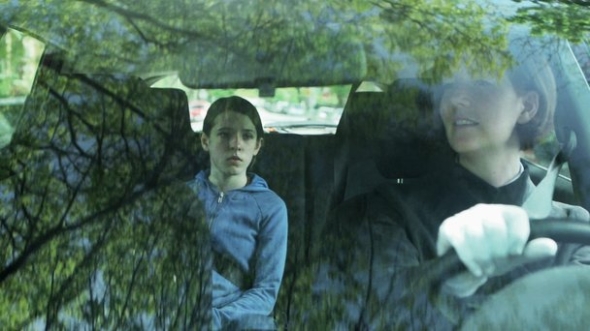 I was lucky enough to have been approached by Anahita Ghazvinizadeh to act in her short film Needle. The film maps a moment in time with a girl whose family is going through a divorce. The simple act of piercing her ears takes on greater meaning. I play the mother. The film recently won the Cannes Film Festival Cinefoundation Prize, the highest award for a student filmmaker, and has screened in many other film festivals.
I was lucky enough to have been approached by Anahita Ghazvinizadeh to act in her short film Needle. The film maps a moment in time with a girl whose family is going through a divorce. The simple act of piercing her ears takes on greater meaning. I play the mother. The film recently won the Cannes Film Festival Cinefoundation Prize, the highest award for a student filmmaker, and has screened in many other film festivals.
“Moe Beitiks makes the mother quite human even if she is all germophobia and egotism”– Jay’s Movie Blog
Lab for Apologies and Forgiveness v.3 (2013)
Lab for Apologies and Forgiveness v.3 from Meghan Moe Beitiks on Vimeo.
“A Lab for Apologies and Forgiveness†is an ongoing work in which I perform within a multimedia workspace, creating dialogues between uranium-reducing bacteria, accidents within the Manhattan Project, public apologies, the idea of safe distance, the words of a microbiologist, materials and cultural memes in an attempt to create a trans-human act.
In version 3, collaborator Sarah Knudtson and I ask members of an audience to stand in space according to a diagram of a Manhattan Project nuclear accident. While a clip depicting the accident from the film “Fat Man and Little Boy” plays, these participants are thrown spinach-seed infused seed bombs while Knudtson tapes out blast patterns on the floor. As Knudston sketches images pulled from Manhattan-Project research, I unpack site-specific ideas of safe distance, remediation and recovery. The audience is asked to read along with an interview of a scientist researching uranium-reducing bacteria and to breathe along to a clip of John Cusack. The performance is a half-hour long non-linear journey through the modern meanings of nuclear toxicity, error, our expanded implication and potential collective recovery.
A Lab for Apologies and Forgiveness v.2 / Act of Research v. 1 (2013)
Part of “A Lab for Apologies and Forgiveness,” An ongoing work in which I perform within a multimedia workspace, creating dialogues between uranium-reducing bacteria, accidents within the Manhattan Project, public apologies, the idea of safe distance, the words of a microbiologist, materials and cultural memes in an attempt to create a trans-human act.
“Act of Research v.1” is the creation of a benign bomb. Bomb creation is set to a scene from the 1989 film “Fat Man and Little Boy,” in which a nuclear accident is fictionalized. I appropriate imagery and presence from the film in an attempt to create, as Kris Lenz wrote in Fnews, “an alternative reality where art, science and drama meet at a crossroads. In this version, the outcome is not an ecological disaster that could take millions of years to remediate, but instead a conversation where awareness of environmental concerns and solutions are raised and disseminated.” photos by Arjuna Capulong.
A Lab for Apologies and Forgiveness v.1 (2012)
An installation at the School of the Art Institute of Chicago Sullivan Galleries, part of the 2012/3 “New Works” show. Curated by Laura Caroline de Lara, Ann Meisinger, Gibran Villalobos and others. Included several video “Case Studies” embedded below, microbial fuel cells with soil from various sites, and a lab book for visitors to write their own apologies or forgivings, or experiences with such.
Case Studies in Apologies and Bacterial Landscapes
Car-E-Oke (2012)
In “Car-E-Oke,” you can choose the make and model of a car and sing along to its exhaust sounds. Regular engine noises have fun karaoke subtitles. But there’s a catch: the sound system is bike-powered. Visitors are encouraged to hop on the bike and “pedal-power” the PA. In addition, I bike every other day of the exhibition, wearing bike shorts, a sequined top, shiny sunglasses, and a fanny pack that emitted sound tracks from classic car chase movies. The sound of the car engine is acknowledged as a kind of soundtrack to our lives.
Fixing Experimental Station Chairs (2012)
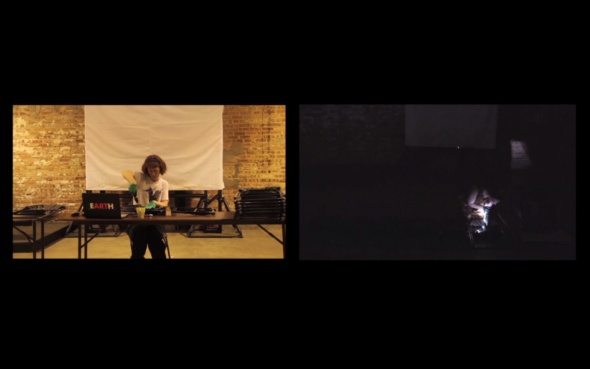
The Experimental Station had a stack of broken chairs. I fixed half the chairs and asked for input from the community as to how I should fix chairs in performance. Then I fixed chairs in performance.
Wear a dress with flowers– Liz Lyon, market volunteer
Wear your hair back, no makeup– Danny White, market vendor
Play music with a rhythm you can fix chairs to– Corey Chatman, LINK manager
The only lighting should be a flashlight– Elizabeth Gadelha, market vendor
You should fix chairs on the floor– Marley Darvassy, son of B’Gabs’ Vegan Deli
I think you’re the “Chairy Godmother.”– Danny Burke, Market Manager
Sing or hum when you have a tool in your hand. — Dan Peterman, co-founder of Experimental Station
Move furtively– Connie Spreen, Co-founder of Experimental Station
Start out with a hopscotch– Chris Allen, Bike Shop Manager
Rambox. (2012)
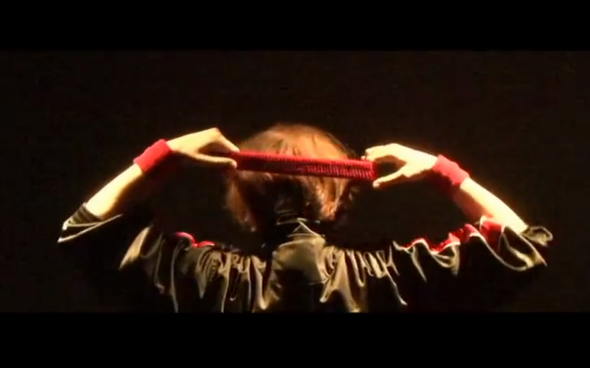 Rambox is a piece exploring detoxification, self-healing and nature. It has been performed at the Grace Exhibition Space in Brooklyn, NY, Hyde Park Art Center and Defibrillator Performance Art Gallery. I drink seven Master Cleanses in the space of fifteen minutes while breathing along with a clip from Rambo III.
Rambox is a piece exploring detoxification, self-healing and nature. It has been performed at the Grace Exhibition Space in Brooklyn, NY, Hyde Park Art Center and Defibrillator Performance Art Gallery. I drink seven Master Cleanses in the space of fifteen minutes while breathing along with a clip from Rambo III.
An Apology to NATO ISAF Commander General John Allen (2012)
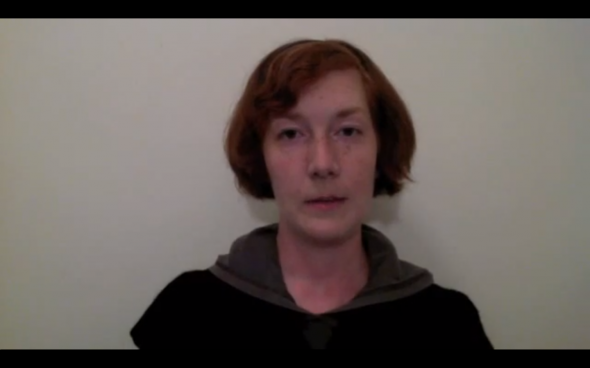 The NATO summit in Chicago is happening right now. Back in February, NATO ISAF Commander General John Allen apologized for the ignorant actions of his coalition soldiers. So I apologize for my own ignorance. And emailed this video to the ISAF.
The NATO summit in Chicago is happening right now. Back in February, NATO ISAF Commander General John Allen apologized for the ignorant actions of his coalition soldiers. So I apologize for my own ignorance. And emailed this video to the ISAF.
